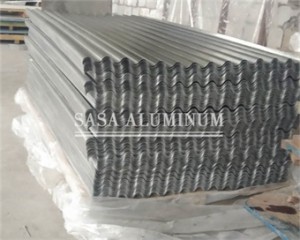The manufacturing process of aluminum corrugated sheets typically involves the following steps:
Material preparation: Aluminum coils or sheets are selected as the base material for manufacturing corrugated sheets. The aluminum used is usually alloyed for better strength and corrosion resistance.
Corrugation: The aluminum sheets are passed through a set of corrugating rolls or dies. These rolls or dies have a pattern of ridges and valleys that shape the metal into a corrugated form. This process imparts the characteristic wavy or ribbed appearance to the sheet.
Cutting and sizing: After corrugation, the aluminum sheets are cut to the desired lengths and sizes using shearing or cutting machines. This step ensures uniformity and prepares the sheets for further processing or packaging.
Surface treatment: Depending on the desired application and aesthetic requirements, the aluminum corrugated sheets may undergo surface treatments. Common treatments include cleaning, anodizing, or applying coatings such as paints or protective films. These treatments enhance the appearance, durability, and resistance to corrosion.
Quality control: Throughout the manufacturing process, quality control measures are implemented to ensure that the corrugated sheets meet the required standards. This may involve inspections, dimensional checks, and testing for mechanical properties.
Packaging and distribution: Once the aluminum corrugated sheets pass the quality control checks, they are packaged and prepared for distribution. The sheets are often stacked, bundled, or packed in protective materials to prevent damage during transportation.
It’s worth noting that the specific manufacturing process may vary depending on the equipment, technologies, and specific requirements of the manufacturer.
Post time: Jun-16-2023
